A variety of animals have been farmed in Ryedale and the North York Moors for thousands of years. At the Museum, we tell this story through a traditional farming area featuring examples of rare-breed animals that were once abundant in the region. You can also help feed them as part of your family day out in the North York Moors.
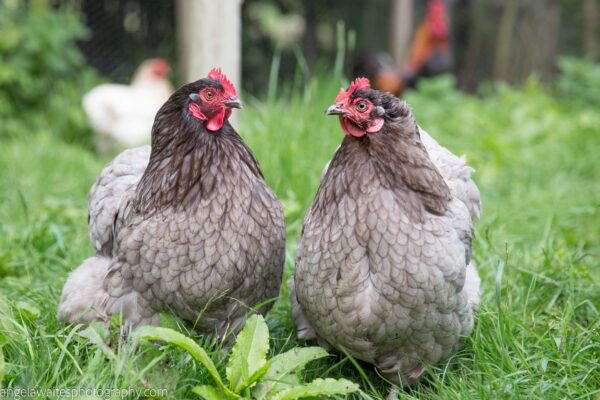
‘Museum Friends’ by Angela Waites Photography
For much of the year, we have Manx Loaghtan sheep and Tamworth pigs, There are also a range of traditional-breed chickens, including Light Sussex, Barnevelder, Orpington and Yorkshire Pheasant Fowls.
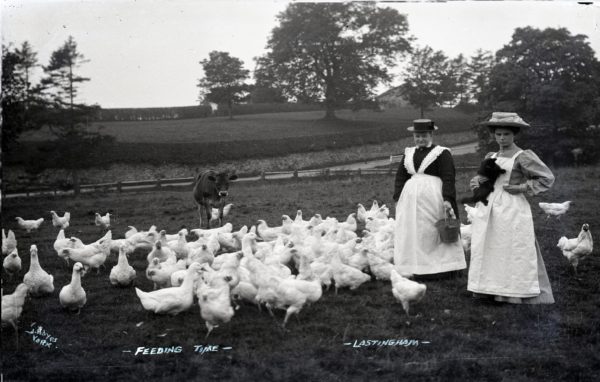
‘Feeding Time’ in Lastingham, by William Hayes
Our collection photographs also offer a fascinating insight into the lives of the ordinary people who lived in this area. These are particularly significant since rural farming communities often go undocumented. The necessary chores associated with tending flocks of hens would have been undertaken by a range of family members. In ‘Feeding Time’, one of the women keeps a close guard over their black cat!
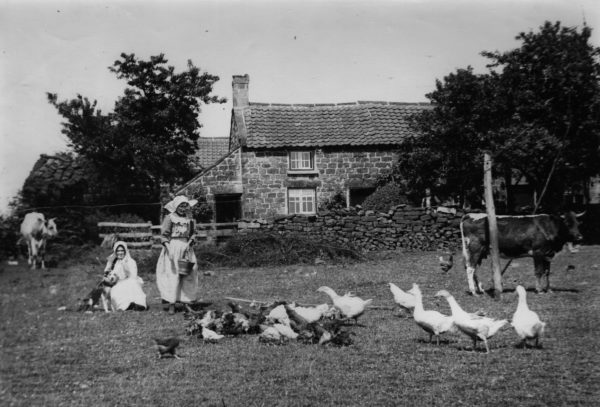
‘Feeding the Chickens’, taken 26 June 1914 by William Hayes
Much like cows and sheep, chickens were also herded on foot. It was not uncommon to see large flocks of the birds being walked from village to village.
Perhaps no animal was more self-sufficient and adaptable than the highly-popular cottage pig. At the Museum, our Crofter’s Cottage shows an example of a Tudor dwelling which the inhabitants would have shared with their livestock. Some cottage pigs would have been brought into the home at night and the family would have benefitted from their warmth.
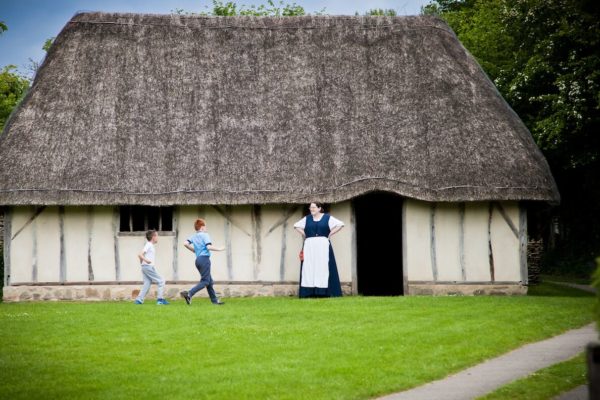
A Crofter’s Cottage at Ryedale Folk Museum
The pig was valued for its ease of breeding and ability to feed from table scraps and orchard windfalls. This made it an ideal cottage animal in rural communities, long after cramped conditions banished it from urban areas in the nineteenth century.
Most years we have a pair of pigs for visitors to feed at the Museum. In recent years, these have been Middle White, Saddleback or Tamworth from Temple Newsam’s specialist breeding centre, Home Farm, near Leeds. The Tamworth, with its distinctive ginger colouring, is considered Britain’s oldest pure-breed pig.
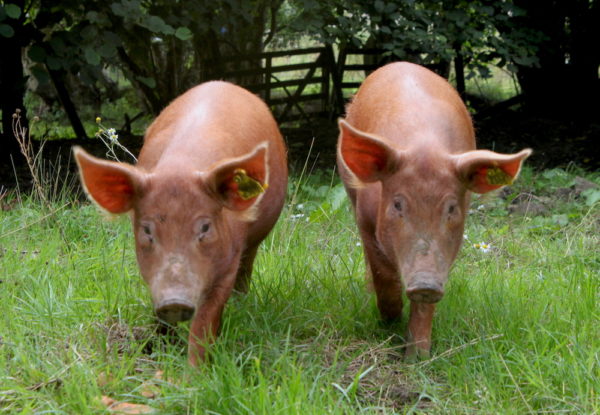
After the Second World War, Tamworth numbers declined rapidly as farmers concentrated on faster-growing breeds. Now, there are fewer than 300 breeding pairs and the Tamworth is currently classified as ‘vulnerable’ by the Rare Breeds Survival Trust. It is an important reminder that farm animals that have inhabited these isles since the Iron Age are in danger of being lost.
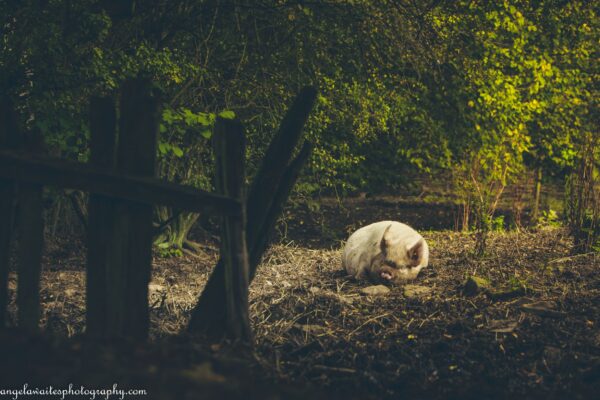
‘Resting’, by Angela Waites Photography
Finally, a word should be reserved for the humble cow, captured in our historic photos. Herds were farmed in the area, but some families also kept an individual animal for milk – as anyone familiar with the pantomime of ‘Jack and the Beanstalk’ won’t be surprised to read.
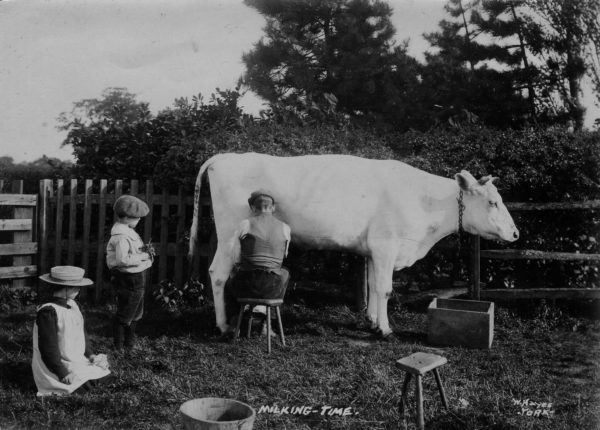
‘Milking Time’ by William Hayes
Milking by hand was the only option until the late nineteenth century. In rural areas on farms and small holdings with small herds, the process was not mechanised until well into the twentieth century.
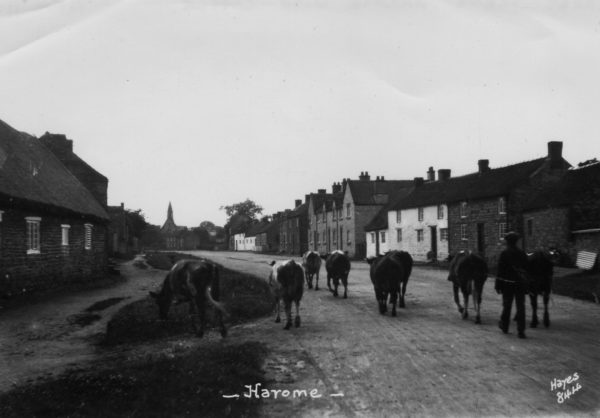
‘Driving Cattle’ through Harome, 1928, by William Hayes
